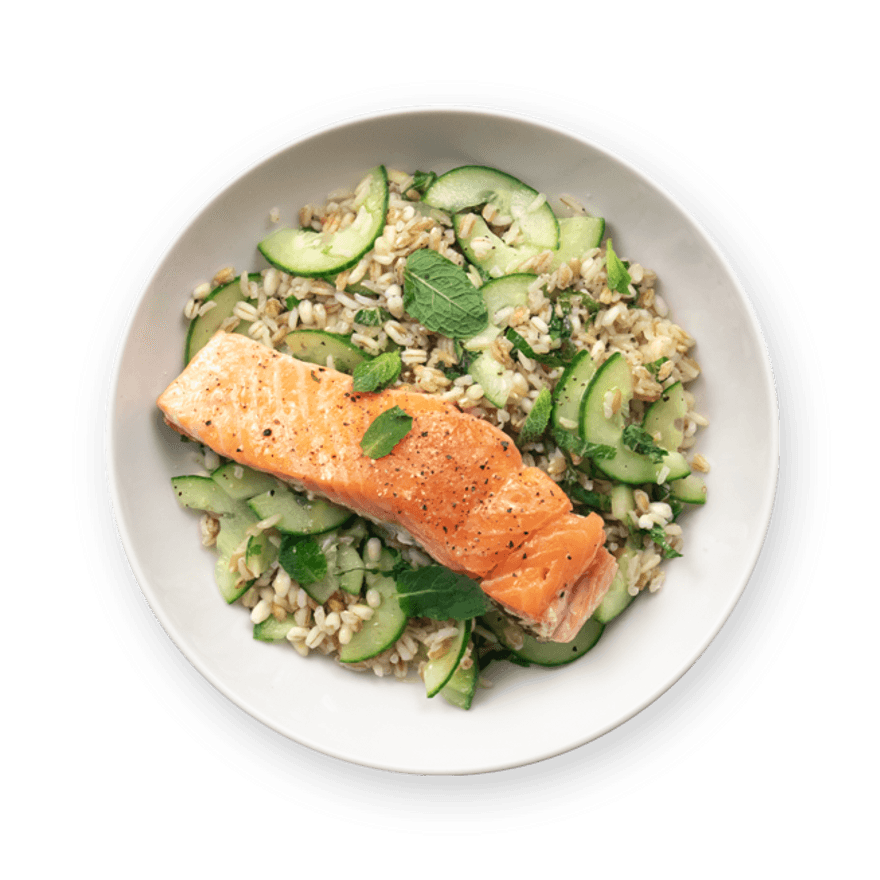Half-baked salmon with a citrus salad
188 reviewsA fresh take on how you eat your salmon, your tastebuds will thank you for this new discovery!

Ingredients
Make sure you have...
Utensils
Pot (small), Frying pan, Stovetop, Colander
recipe

Step 1
Cook the grains according to the instructions on the packet. Once cooked, rinse with cold water to stop them cooking. Strain and set aside to chill.

Step 2
Cook the salmon skin-side down on a low heat for 7-10 minutes. Depending on its thickness, without turning it over. The salmon is cooked once the pale pink color reaches the middle of the filet. Season.


Step 3
Meanwhile, wash and chop the cucumber lengthways. Remove the seeds with a small spoon and slice. Chop the mint leaves.

Step 4
In a salad bowl, mix the grains, cucumber, mint, and add lemon juice and a bit of olive oil. Season and serve on a plate with the salmon.
Personal notes
Add your own flavor!
Nutrition facts
Average estimated amount for one serving
| Energy | 527 cal. |
| Fat | 17 g |
| Carbohydrates | 55 g |
| Protein | 34 g |
| Fiber | 9 g |
Values are based on an average estimate for one serving. All nutrition information presented on Jow is intended for informational purposes only. If you have any concerns or questions about your health, please consult with a health-care professional.
On average, one serving of the recipe "Half-baked salmon with a citrus salad" contains 527 Energy, 17 g of Fat, 55 g of Carbohydrates, 34 g of Protein, 9 g of Fiber.
Price per portion
| € | Nos recettes à -2 € par portion |
| €€ | Nos recettes entre 2 € et 4 € par portion |
| €€€ | Nos recettes à +4 € par portion |
Please note, the price above is dependent on your grocer and the available products in the grocery store you chose.
Scores


A Nutri-score
The Nutri-score is an indicator intended for understanding nutritional information. Recipes or products are classified from A to E according to their food composition to promote (fiber, proteins, fruits, vegetables, legumes, etc.) and foods to limit (energy, saturated fatty acids, sugars, salt, etc.).
B Green-score
The Green-score is an indicator representing the environmental impact of food products. The recipes or products are classified from A+ to F. It takes into account several factors on the pollution of air, water, oceans, soil, as well as the impacts on the biosphere. These impacts are studied throughout the product life cycle.
Retrieving reviews...


